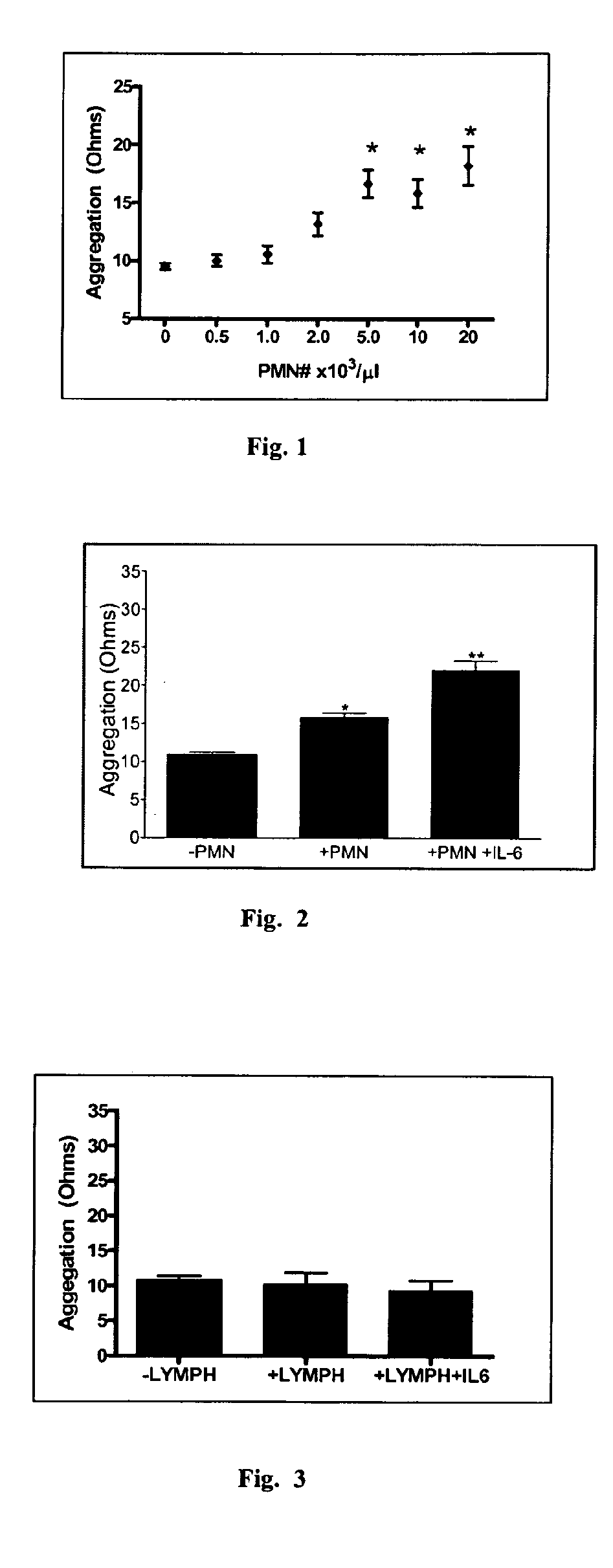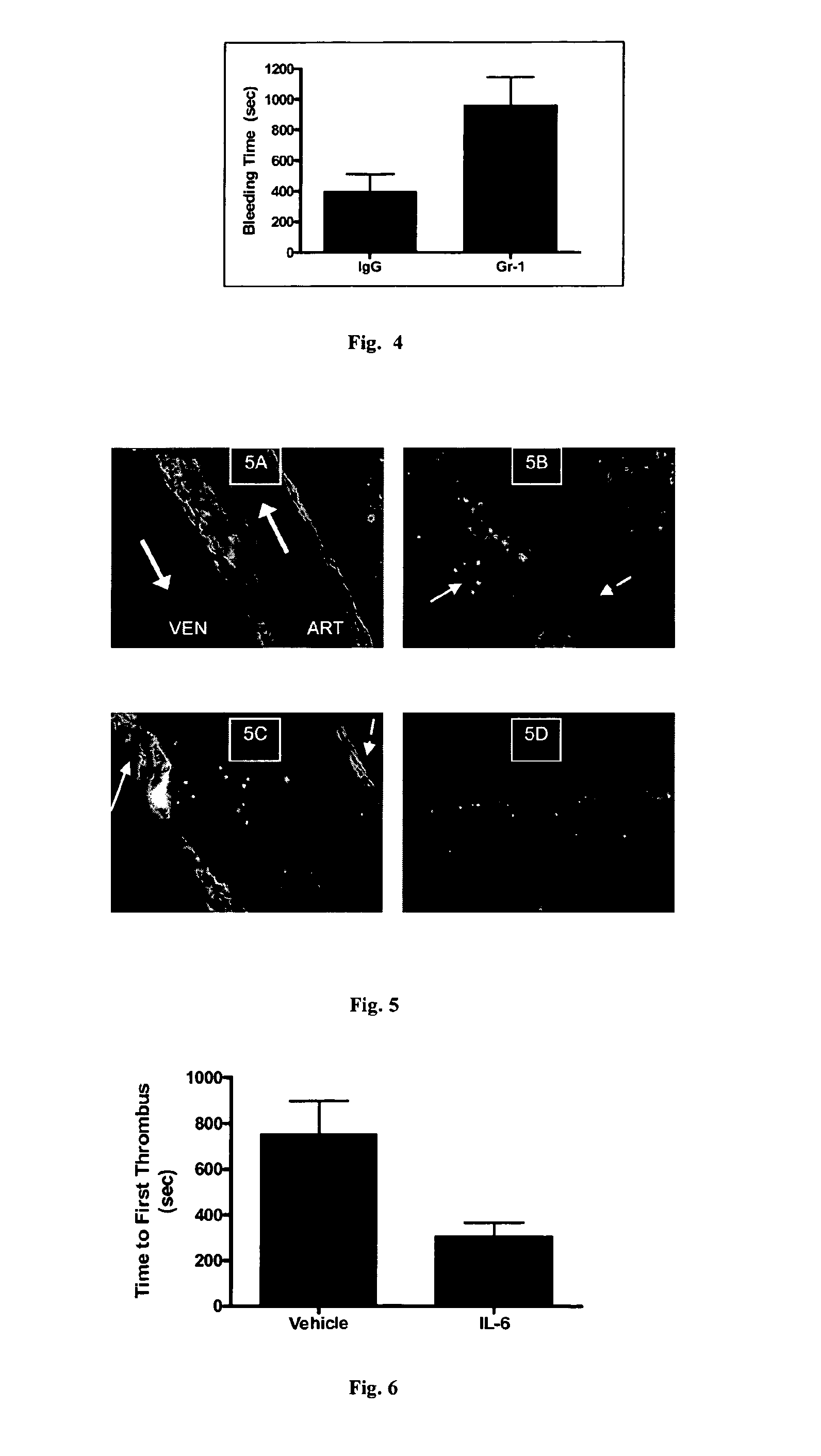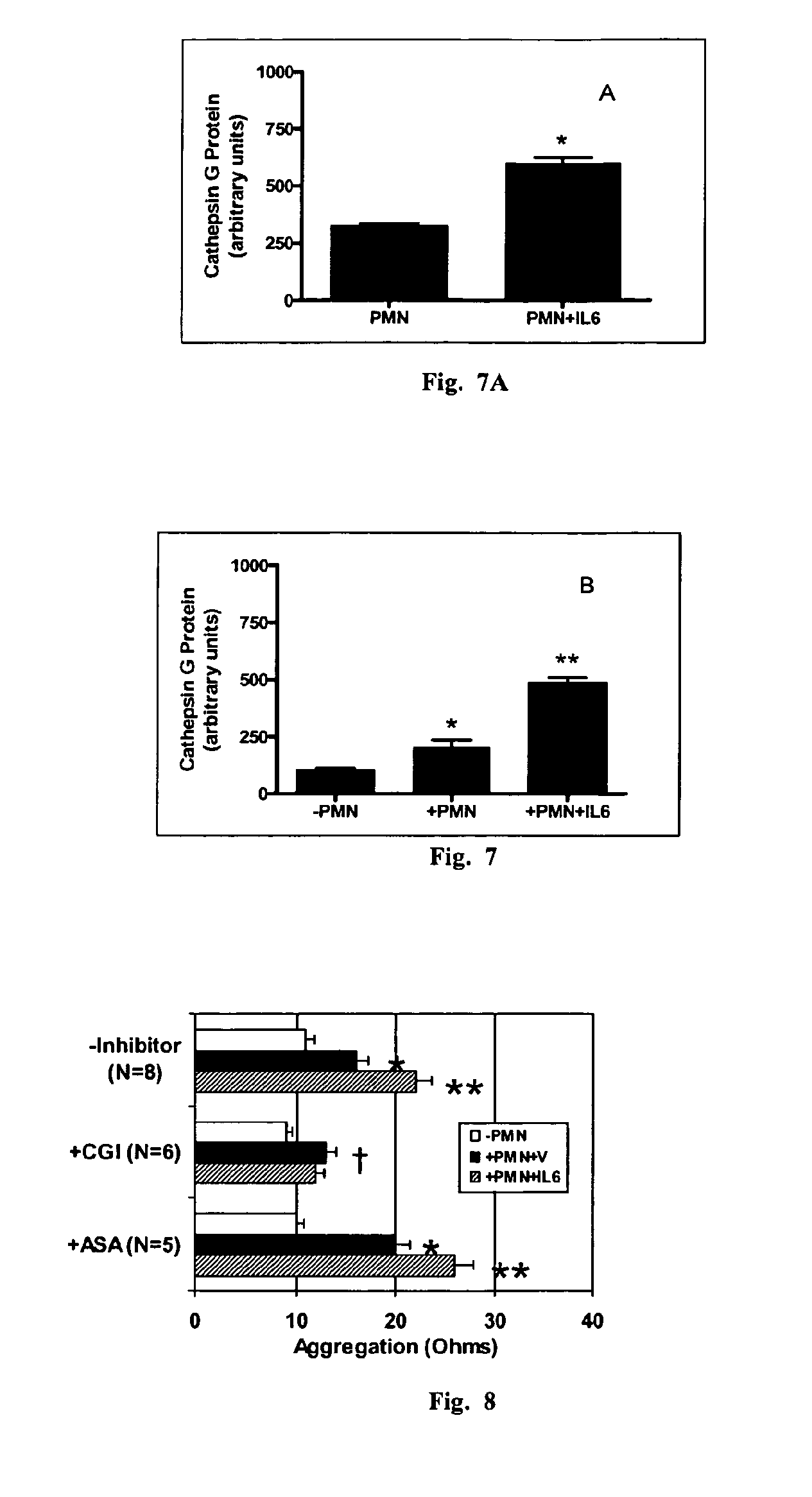Method of inhibiting platelet aggregation and clot formation
a technology of platelet aggregation and clot formation, which is applied in the direction of antibody medical ingredients, extracellular fluid disorders, peptide/protein ingredients, etc., can solve the problems of morbidity and mortality persist, and no therapy has been described to alleviate the inflammatory component of blood vessel occlusion, so as to increase the risk
- Summary
- Abstract
- Description
- Claims
- Application Information
AI Technical Summary
Benefits of technology
Problems solved by technology
Method used
Image
Examples
example 1
Neutrophils Enhance Platelet Aggregation In Vitro
[0218]Neutrophils comprise 40-75% of the circulating leukocyte population in humans but this range is dramatically widened under pathologic conditions. Because neutrophil counts vary dramatically in humans under normal and proinflammatory conditions, we assessed the dose-response relationship between neutrophil number and platelet aggregation ex vivo. For these experiments, neutrophils were isolated from heparin-anticoagulated whole blood by histopaque centrifugation (>95% neutrophil subtype) and cultured in RPMI / 5% autologous serum for 24 hours. Neutrophils were reconstituted with freshly prepared platelet rich plasma (PRP) from the same donor who provided blood for neutrophil isolation 24 hours earlier. Escalating numbers of neutrophils were combined with platelets through a physiologic to pathologic range, and impedance aggregometry in response to thrombin receptor activating peptide (TRAP) and collagen were assessed. Results for t...
example 2
IL-6 Augments the Ability of Neutrophils to Enhance Platelet Aggregation in Vitro
[0219]Experiments demonstrated that physiologic numbers of neutrophils exerted a moderate effect on platelets by enhancing aggregation by 25-50%19. We tested whether this effect would increase under the pro-inflammatory influence of IL-6. IL-6 is a candidate inflammatory cytokine that could link systemic inflammation to atherothrombotic disorders. IL-6 is widely expressed in human tissues in response to infection, tissue trauma, or immunologic challenge20, and plasma levels are associated with future risk of MI and cardiovascular death in asymptomatic individuals and patients with CAD10, 11; however, its ability to modulate the effect of neutrophils on platelets or thrombus formation had not been assessed. To test the hypothesis, human neutrophils were isolated by histopaque centrifugation and incubated cells in the presence of IL-6 (10 ng / ml) or vehicle for 24 hours. Neutrophils were reconstituted with...
example 3
Neutrophils Participate in Hemostasis In Vivo
[0221]In vitro experiments indicated that neutrophils could modify platelet function in vitro. To determine if neutrophils participated in hemostasis in vivo standardized bleeding time in mice was examined after manipulating the number of circulating neutrophils. Briefly, C57BL6 / J wild-type mice were injected intraperitoneally with anti-neutrophil antibody (Gr-1, 0.25 mg) or isotype control. Two days later mice were anesthetized with ketamine (80 mg / kg) / xylazine (13 mg / kg) and tail bleeding was performed by amputating a 3 mm section of the distal tail and immersing it in 37° C. PBS. The time to visual cessation of bleeding was recorded. At the end of each experiment, blood was obtained by retro-orbital puncture and complete blood counts determined by automated cell counter (HemaVet). Gr-1 antibody reduced neutrophil counts by ˜80% compared to IgG control animals (0.44±0.24 vs. 0.08±0.03×103 / μl, N=7), although this difference did not reach...
PUM
| Property | Measurement | Unit |
|---|---|---|
| concentration | aaaaa | aaaaa |
| diameter | aaaaa | aaaaa |
| tail bleeding time | aaaaa | aaaaa |
Abstract
Description
Claims
Application Information
 Login to View More
Login to View More - R&D
- Intellectual Property
- Life Sciences
- Materials
- Tech Scout
- Unparalleled Data Quality
- Higher Quality Content
- 60% Fewer Hallucinations
Browse by: Latest US Patents, China's latest patents, Technical Efficacy Thesaurus, Application Domain, Technology Topic, Popular Technical Reports.
© 2025 PatSnap. All rights reserved.Legal|Privacy policy|Modern Slavery Act Transparency Statement|Sitemap|About US| Contact US: help@patsnap.com



